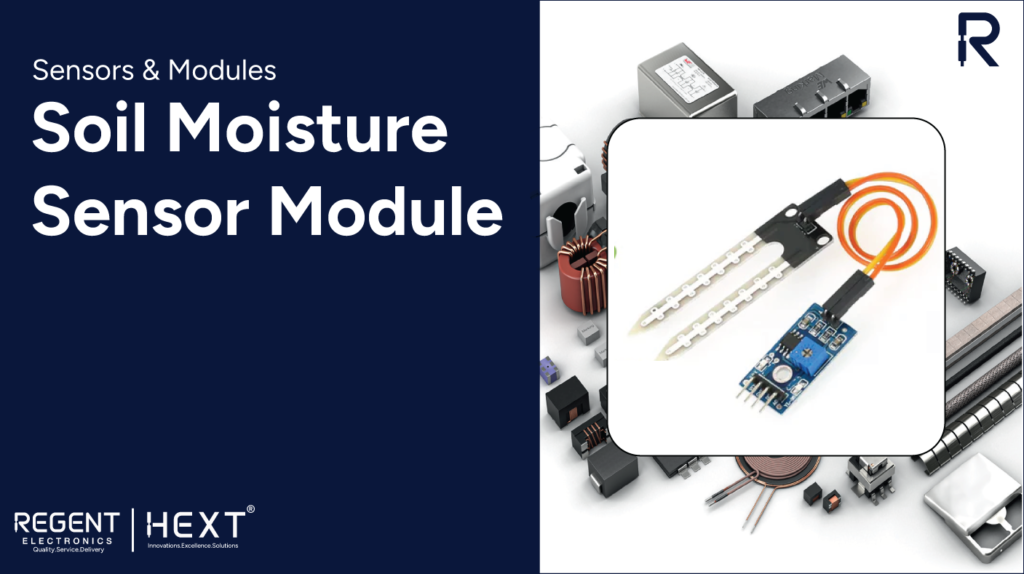
Soil Moisture Sensor Module: A Smart Solution for Efficient Plant Care
The Soil Moisture Sensor Module is an essential tool for monitoring and maintaining soil moisture levels in agriculture, gardening, and automated plant care systems. This module uses a pair of conductive plates, known as probes, to measure the volumetric water content in the soil. Whether you are a hobbyist or a professional, the soil moisture sensor helps in optimizing irrigation systems, ensuring that plants receive just the right amount of water for healthy growth.
At Regent Electronics, we offer top-notch soil moisture sensor modules that are easy to use and integrate with microcontrollers such as Arduino, NodeMCU, and other platforms. These sensors are equipped with both digital and analog outputs for flexibility in applications.

What is a Soil Moisture Sensor Module?
The soil moisture sensor module consists of two conducting plates that function as probes. These plates act as a variable resistor and help measure the moisture level in the soil based on the current that passes between them. The key to this technology is that dry soil conducts electricity poorly, resulting in higher resistance, while wet soil offers better conductivity, thus lowering resistance. The sensor uses this principle to provide a measurement of soil moisture.

Soil Moisture Sensor Pinout Configuration:
| Pin Name | Description |
| VCC | Powers the module, typically at 5V |
| GND | Ground connection |
| DO | Digital output pin for high/low output |
| AO | Analog output pin for variable readings |
Key Specifications of the Soil Moisture Sensor:

- Input Voltage: 3.3V to 5V
- Operating Current: 15mA
- Digital Output: 0V or 5V (adjustable trigger level)
- Analog Output: 0V to 5V (mapped from 0 to 1023 on the serial monitor)
The sensor also features a potentiometer (preset) that allows users to adjust the threshold level for moisture detection, providing flexibility to fine-tune the sensor for different soil types and moisture levels.
Understanding the LM393 Comparator IC:
At the heart of the soil moisture sensor is the LM393 comparator IC, which plays a key role in determining when the moisture level crosses a threshold. The comparator compares the threshold voltage set by the potentiometer and the moisture sensor input, triggering a change in the digital output.
The LM393 comparator is a low-current IC ideal for battery-operated devices. It is highly versatile due to its wide voltage supply range, making it suitable for a variety of applications, including soil moisture sensing.
Working of the Soil Moisture Sensor Module:
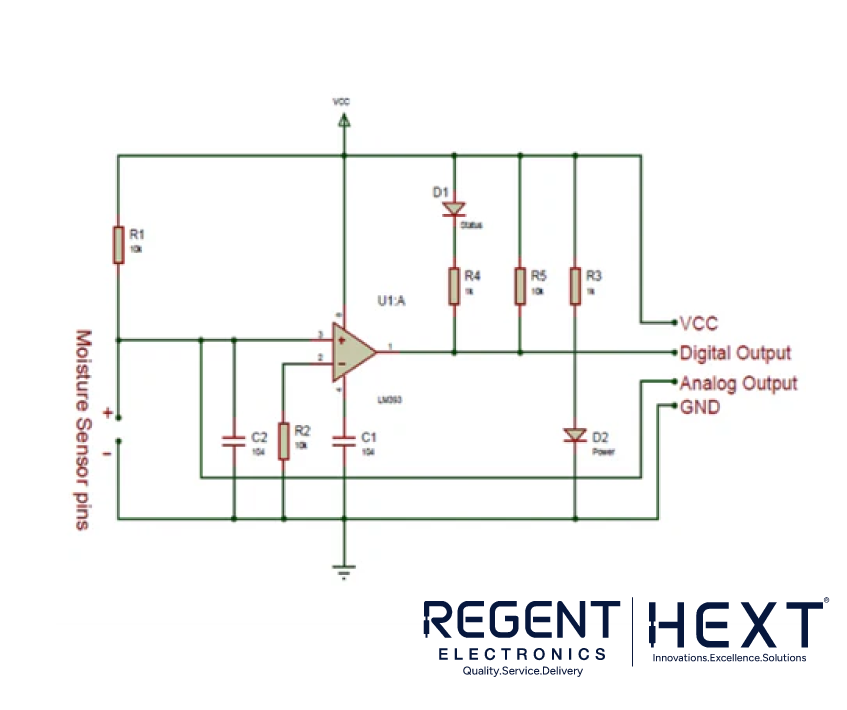
The soil moisture sensor module operates on a simple voltage comparison principle. The sensor has four pins—VCC, GND, DO, and AO. The digital output (DO) is connected to the output of the LM393 comparator IC, while the analog output (AO) is linked to the sensor probe.
Here’s how it works:
- Dry Soil: Higher resistance leads to less conductivity and higher voltage at the sensor pin.
- Wet Soil: Reduced resistance results in better conductivity, which lowers the voltage.
- The LM393 comparator compares the threshold voltage set by the potentiometer and adjusts the digital output accordingly.
Interfacing the Soil Moisture Sensor with Arduino:
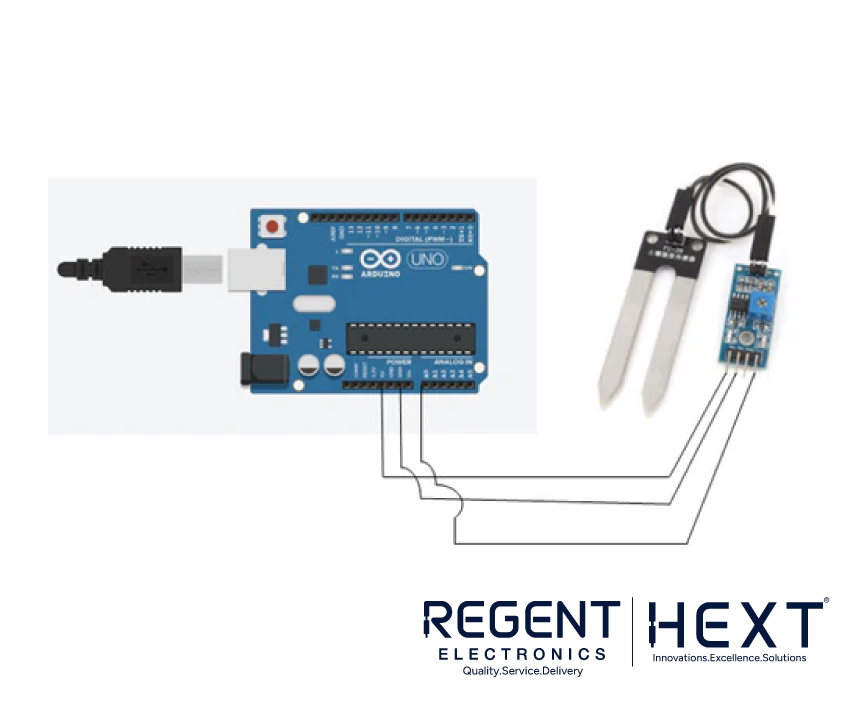
Connecting the soil moisture sensor module to an Arduino is straightforward. Here’s how to set it up:
- Connect the VCC pin of the sensor to 5V on the Arduino.
- Connect the GND pin of the sensor to GND on the Arduino.
- Connect the A0 pin of the sensor to the A0 pin on the Arduino.
Using the analog output from the sensor, you can measure the moisture content as a value between 0 and 1023, which corresponds to 0V to 5V. In the code, you can map this range to a percentage of soil moisture, from 0% (dry) to 100% (wet).
Sample Code for Soil Moisture Sensor:
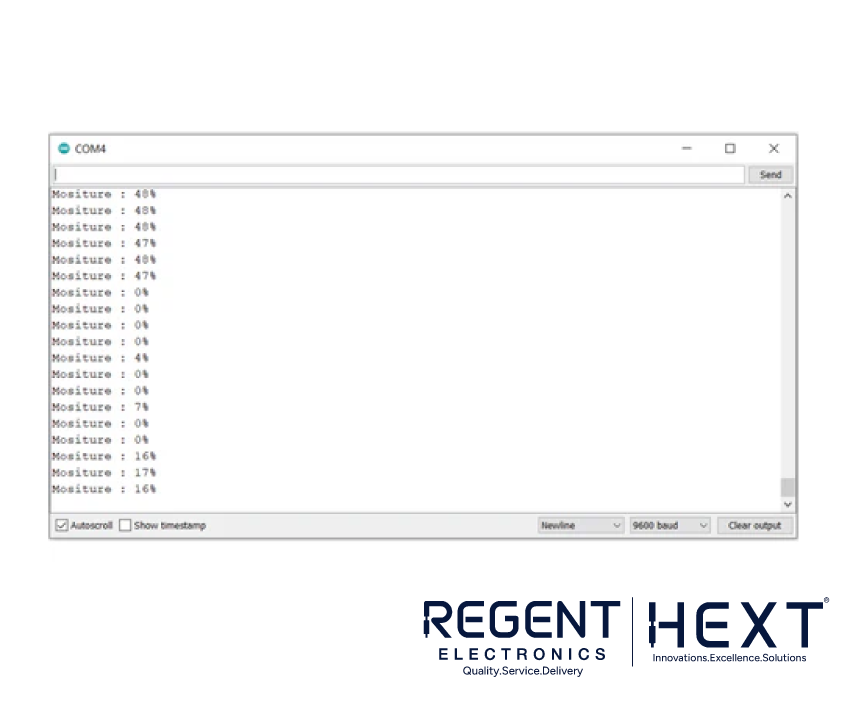
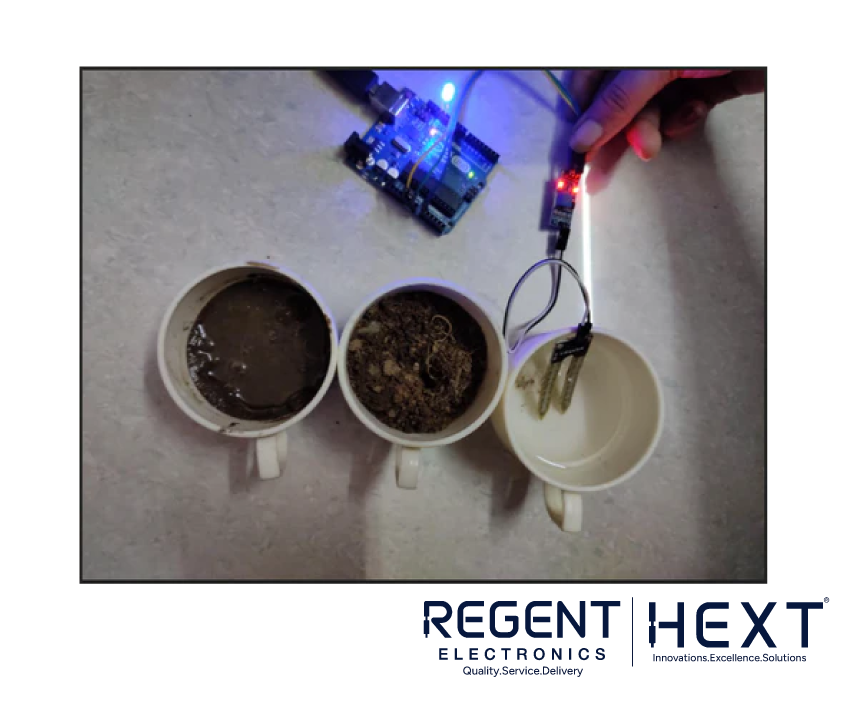
cpp
CopyEdit
int sensor = A0; // Analog pin connected to the soil moisture sensor
int output; // Variable to store sensor reading
void setup() {
Serial.begin(9600);
Serial.println(“Reading From the Sensor …”);
delay(2000); // Wait for sensor stabilization
}
void loop() {
output = analogRead(sensor); // Read sensor value
output = map(output, 1016, 215, 0, 100); // Map the value to a percentage
Serial.print(“Moisture: “);
Serial.print(output); // Print moisture value
Serial.println(“%”);
delay(1000); // Wait before taking the next reading
}
This code will read the analog data from the soil moisture sensor and convert it into a percentage displayed on the serial monitor. You can also adjust the threshold in the if conditions based on the moisture level readings for specific needs.
Common Questions (FAQs) About Soil Moisture Sensors:
Q1: Can the soil moisture sensor be placed in water? Yes, you can place the sensor in water, but it will not provide meaningful readings. For optimal usage, place the sensor in soil, where moisture content can vary.
Q2: Can a soil moisture sensor be used as a pH sensor? No, a soil moisture sensor cannot measure pH levels. It is specifically designed for moisture detection, not pH measurement.
Q3: What is the output of the soil moisture sensor? The sensor offers both digital and analog outputs. The digital output can be either HIGH or LOW (0 or 5V), while the analog output provides a variable value between 0V and 5V, mapped to 0-1023 readings.
Q4: How do I set the threshold for moisture detection? Use the onboard potentiometer (trimmer pot) to adjust the threshold value. You can also modify the code to adjust the moisture levels based on the readings from the serial monitor.
Q5: Can a humidity sensor be used as a soil moisture sensor? No, humidity sensors are not suitable for measuring soil moisture. They are designed to measure air moisture and should be kept dry to avoid damage.
Q6: What is the range of the soil moisture sensor? The sensor’s analog output varies between 0V to 5V, and the digital output can be HIGH or LOW. You can adjust the threshold using the potentiometer for better accuracy.
Why Choose Regent Electronics for Soil Moisture Sensors?
At Regent Electronics, we provide high-quality soil moisture sensor modules that are ideal for agriculture, gardening, and automated irrigation systems. Whether you are building a smart garden or a soil moisture monitoring system, our sensors offer reliable performance and easy integration with popular microcontrollers like Arduino and NodeMCU.
Explore our range of soil moisture sensors and other electronic components at Regent Electronics today, and take control of your plant’s water needs with precision!
